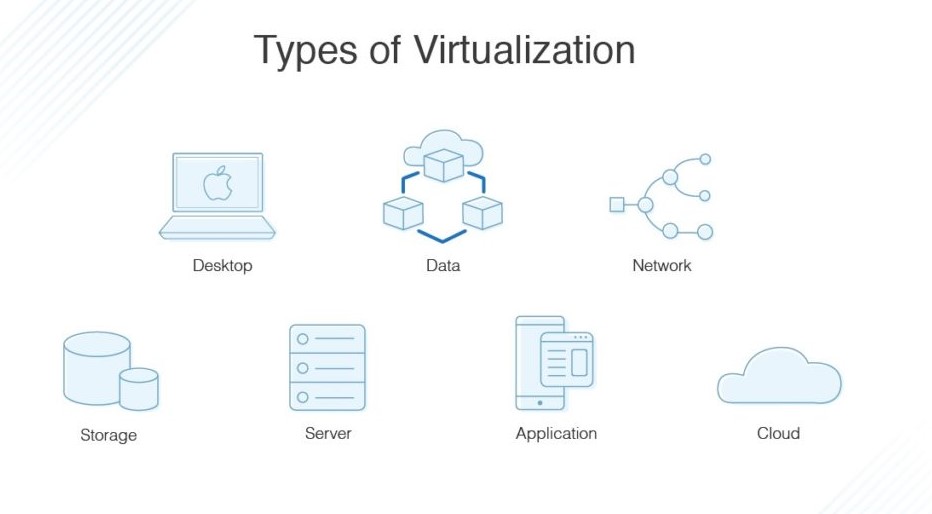In the dynamic landscape of modern computing, the term “virtualization” has become increasingly prevalent. But what exactly is virtualization, how does it work, and why do you need it? In this article, we will embark on a journey to demystify the concept of virtualization, explore its inner workings, and uncover the myriad benefits it brings to businesses and individuals alike.
Unraveling the Essence of Virtualization
At its core, virtualization refers to creating virtual versions of physical resources, such as servers, storage devices, networks, and even operating systems. It enables the efficient utilization and management of computer resources by abstracting them from their physical hardware, allowing multiple virtual instances to coexist and work independently on a single physical machine.
Understanding How Virtualization Works
Virtualization relies on software known as a hypervisor or virtual machine monitor (VMM) that acts as an intermediary between the physical hardware and the virtual instances. The hypervisor creates and manages virtual environments, known as virtual machines (VMs), which possess their isolated operating systems, applications, and resources.
The Benefits of Virtualization:
Enhanced Resource Utilization
Virtualization enables efficient resource utilization by consolidating multiple virtual machines onto a single physical server. This consolidation reduces the need for additional hardware, optimizing space, power consumption, and cooling requirements. By maximizing resource utilization, organizations can achieve cost savings and minimize their environmental footprint.
Scalability and Flexibility
Virtualization provides unmatched scalability and flexibility. Virtual machines can be easily created, modified, or deleted to meet changing demands. The ability to allocate and reallocate resources dynamically allows businesses to scale their infrastructure up or down rapidly, ensuring optimal performance and responsiveness to fluctuating workloads.
Improved Disaster Recovery and Business Continuity
Virtualization simplifies disaster recovery and enhances business continuity. Virtual machine snapshots and backups can be created, enabling quick and seamless restoration in the event of hardware failure or data corruption. Moreover, virtualization enables the migration of virtual machines between physical servers, facilitating planned maintenance or rapid recovery during emergencies.
Cost Efficiency
Virtualization brings significant cost savings by reducing hardware requirements, power consumption, and maintenance costs. Organizations can optimize their infrastructure investments, lower capital expenditures, and streamline operational expenses by consolidating multiple virtual machines onto fewer physical servers. Additionally, virtualization enables better resource allocation, eliminating underutilized hardware and maximizing return on investment.
Testing and Development Agility
Virtualization provides a flexible and isolated environment for testing and development purposes. Developers can create virtual machines with different configurations, operating systems, and software versions, enabling efficient software testing, debugging, and application development. Virtualization accelerates the development lifecycle, fosters innovation, and minimizes the risk of conflicts or disruptions in production environments.
Simplified IT Management
Virtualization simplifies IT management and maintenance. Centralized management tools allow administrators to monitor and control virtual machines from a single interface, streamlining tasks such as provisioning, patching, and updates. The ability to clone or template virtual machines simplifies the deployment of standardized configurations, ensuring consistency and reducing administrative overhead.
Embracing the Virtual Revolution
Virtualization has transformed the computing landscape, empowering businesses and individuals with unprecedented agility, efficiency, and cost savings. Whether you are a small business seeking scalability and cost optimization or an enterprise aiming for improved resource utilization and disaster recovery, virtualization is a game-changer.
To embark on your virtualization journey, assess your specific needs, research virtualization technologies, and consider engaging with experts to design a tailored virtualization strategy. By harnessing the power of virtualization, you can unlock a new realm of possibilities, revolutionize your IT infrastructure, and propel your organization toward a future where efficiency and innovation coexist seamlessly.
In conclusion, virtualization is more than just a buzzword; it is a transformative technology that drives efficiency, scalability, and cost savings. Understanding its principles and embracing its benefits can catapult your business into the digital era. So, take the leap into virtualization and embark on a journey that will reshape the way you compute, innovate, and thrive in the ever-evolving world of technology.
Do you have a software/mobile development project in mind? Contact us today and let us help you turn your idea into reality. We have the skills, experience, and passion to create amazing solutions for your business needs. Email us at sales@nesesho.com
Want to know more about our Tech Solutions? Visit us at www.nesesho.com



